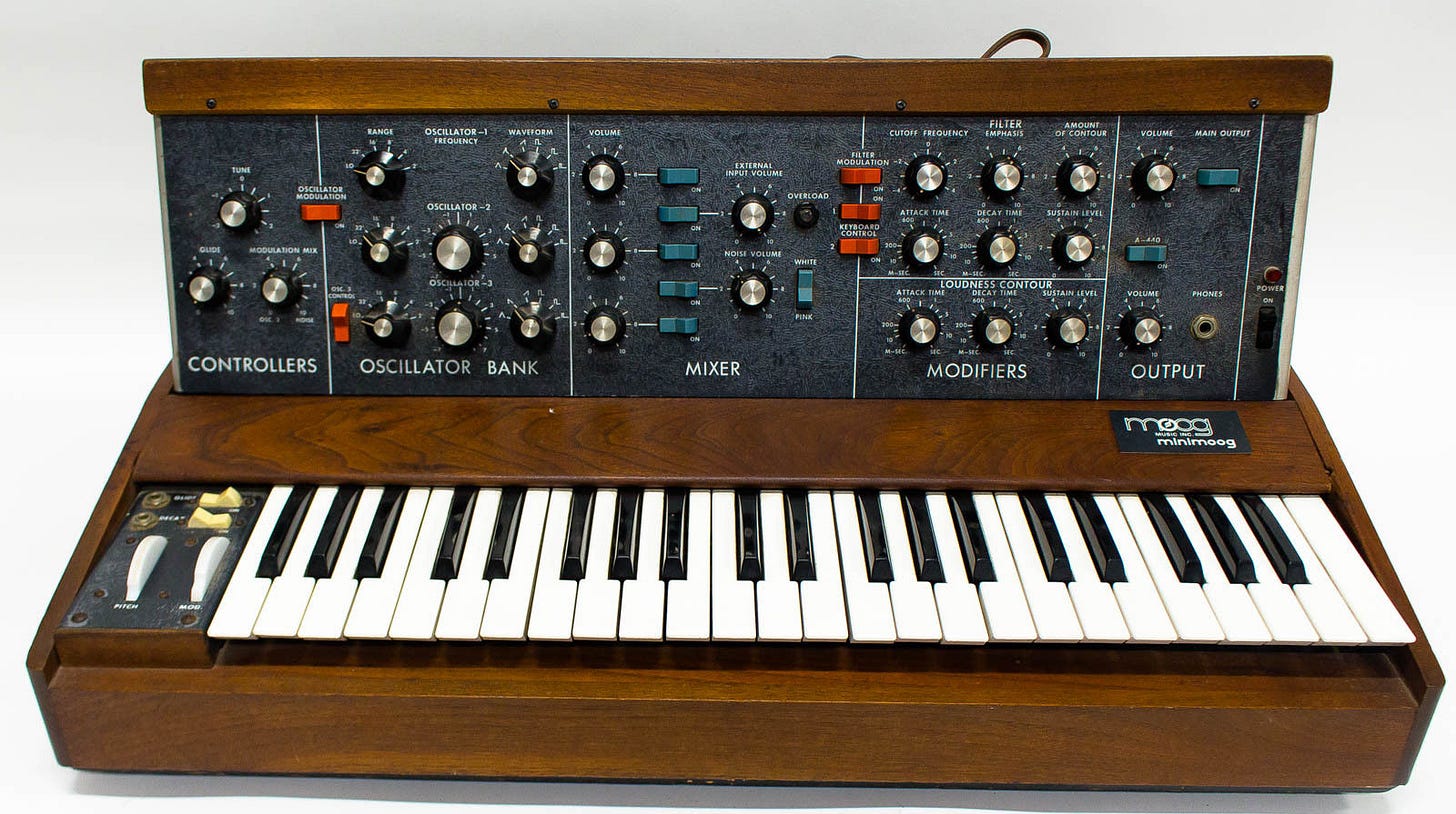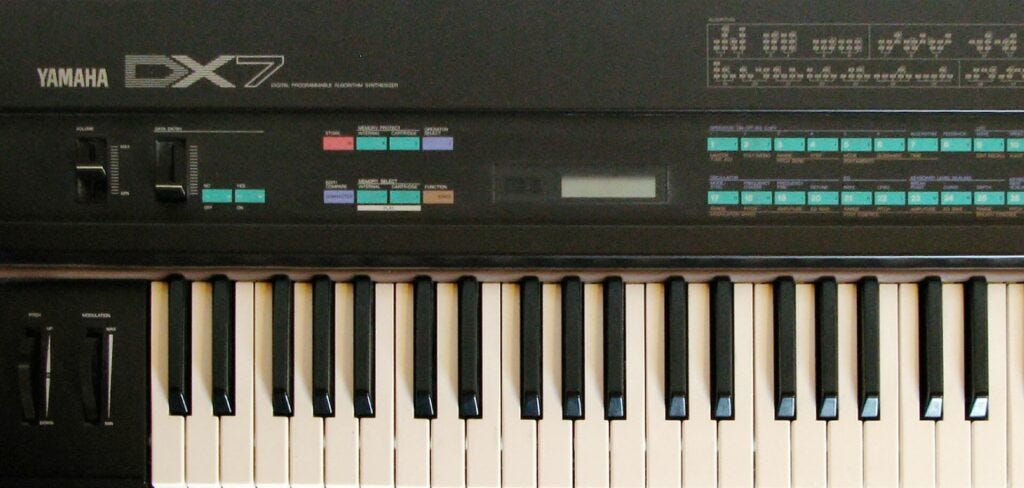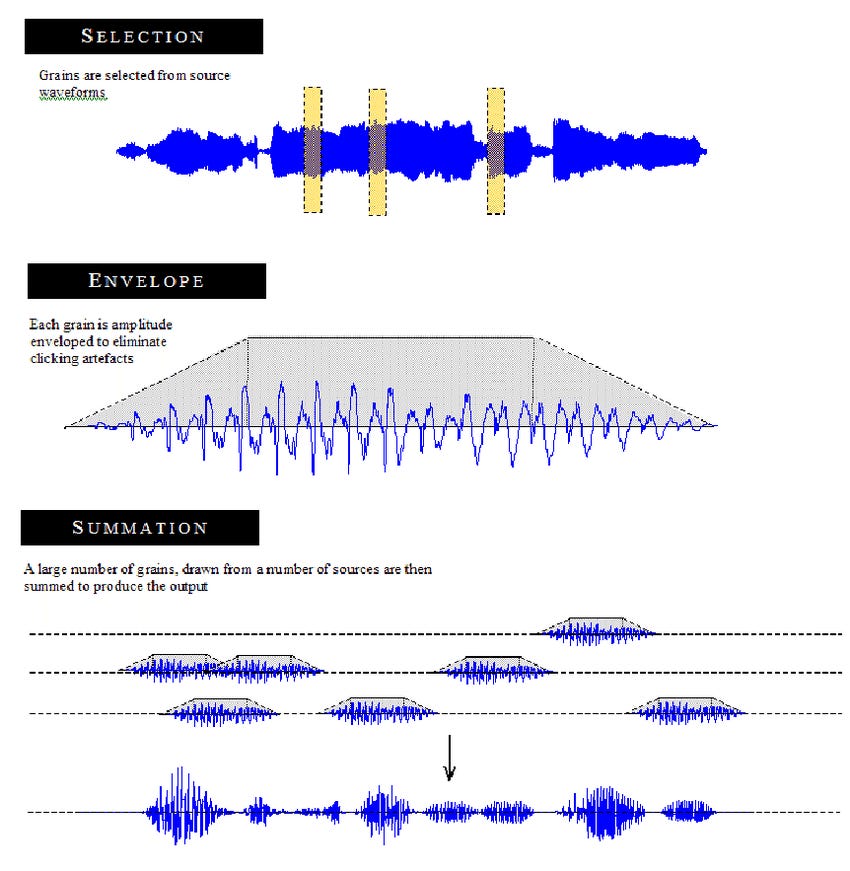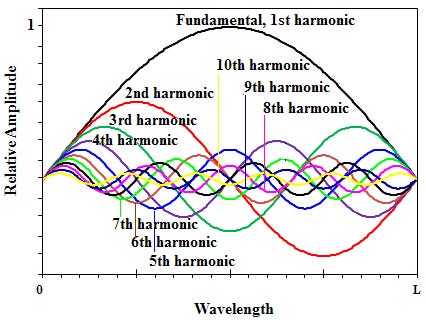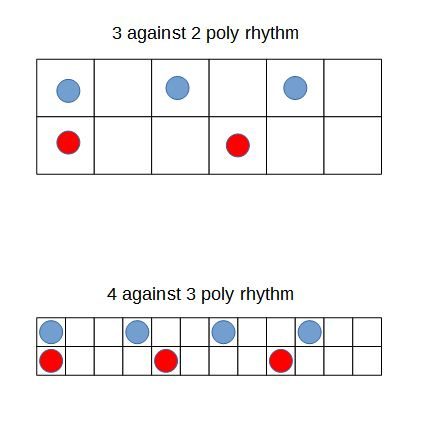SIGNAL DEPT Edition 12
The Micro-Architectures of Sound: Fourier, Harmonics, and the Synthesis Grammars that Built Electronic Music
You’ve tuned into the transmission. Welcome to the feed.
Signal Dept. is a human-filtered electronic music digest — equal parts playlist, field report, and zine. We trace signals from the underground: experimental EPs, Bandcamp drops, small-run vinyls, and producers working just outside the algorithmic frame.
Each edition moves between listening and investigation — mapping how scenes form, who’s pushing sound design forward, and what connects the frequencies emerging from bedrooms, basements, and backrooms across the world.
We’re not optimising for clicks or chasing hype.
We’re documenting signal strength — and the people who keep broadcasting it.
In this edition:
Signal Scan Track Notes
The Micro-Architectures of Sound: Fourier, Harmonics, and the Synthesis Grammars that Built Electronic Music (Part 3 in the series From Telharmonium to Techno: A Technical History of Electronic Music)
SIGNAL SCAN TRACK NOTES
Each edition, Signal Scan highlights a handful of tracks worth pulling into rotation — selections that reveal how producers are shaping low-end, texture, and atmosphere across electronic subcurrents. No algorithms, just human-filtered signals.
Find these and many more tracks on the YouTube playlist: Signal Dept - Electronic Music New Releases
The playlist features songs across various genres and sub-genres of House, Tech and Electro. There are several established acts but the focus is on the lesser known artists.
1. Smooth Motion by Gega
Smooth indeed! Saxy and deep. Fantastic production value and great melodic content from the organic instruments over the top.
2. Basalt by zekeN
Deep TecH, hypnotic with some great textures
3. Help Me Out by Nando Fortunato
Quintessential Summer deep house
4. A Paradox Of Witches by Younger Brother
Something a little different today, a bit more towards #ElectroPop
5. Inferno by KASIA & SOLANCE - Inferno
A good balance between melodic and dirty
Check out the full playlist: SIGNAL DEPT YOUTUBE PLAYLIST
The Micro-Architectures of Sound: Fourier, Harmonics, and the Synthesis Grammars that Built Electronic Music
Part 3 in the series From Telharmonium to Techno: A Technical History of Electronic Music
Electronic music’s evolution is usually narrated through machines, genres, and scenes — the Telharmonium’s humming alternators, Detroit’s 909s, Berlin basements, Chicago warehouses. But beneath this familiar lineage lies a deeper continuity: the physics and mathematics of sound. Long before voltage-controlled filters, MIDI, or grooveboxes, the foundations of modern electronic music were laid by the discovery that complex tones are composed of simple ingredients. These ingredients — sine waves, harmonic partials, and mathematically ordered spectra — form what we can call the micro-architectures of sound. Additive, subtractive, FM, granular, and nearly every DSP technique ultimately trace back to a single insight: sound is patterned energy across time.
This essay explores the conceptual grammar behind those structures. It serves as the third installment in From Telharmonium to Techno, building on Thaddeus Cahill’s early additive logic and extending it into the digital era.
1. Fourier’s Breakthrough: Decomposing Sound into Sinusoidal Building Blocks
Every synthesis method begins — explicitly or implicitly — with the Fourier series, formalized by Joseph Fourier in the early 19th century and later applied to acoustics by Hermann von Helmholtz in the 1860s. Fourier showed that, under standard mathematical conditions, any periodic waveform can be represented as a sum of sine waves of different frequencies, amplitudes, and phases.
This matters because electronic music is fundamentally the art of shaping spectra — the distribution of energy across partial frequencies. Cahill’s Telharmonium, publicly introduced in 1906, demonstrated this physically: its rotating electromagnetic alternators produced sine-like tones that performers mixed to create composite timbres. Today, computers perform these operations numerically with extreme precision, but the conceptual foundation is unchanged.
For a periodic signal with fundamental frequency f₀:
f(t) = a₀ + Σₙ₌₁⁽∞⁾ Aₙ · sin(2π · n · f₀ · t + φₙ)
Each component — a partial or harmonic — is a pure sine wave at frequency n·f₀. Together, these reconstruct the original waveform, whether that’s a violin tone or the raw sawtooth of an analog oscillator. The finer convergence nuances (like the Gibbs overshoot) matter in practice but don’t disturb the core insight: sinusoidal components offer a powerful way of representing sound.
Fourier’s insight is not just a model of sound; it’s a compositional toolset for designing timbre from first principles.
2. Additive Synthesis: Building Tones One Partial at a Time
Additive synthesis directly implements Fourier’s idea: it constructs sound by summing individual sine components, each with its own amplitude envelope — and sometimes its own phase and frequency behavior.
This method allows extraordinary precision. You can build a flute, a bell, a choir pad, or a never-before-heard hybrid by shaping partial amplitudes, envelopes, detuning, and interactions. Slight detuning introduces shimmer or beating; sculpted amplitude curves create dynamic timbral movement.
Cahill’s Telharmonium was the first large-scale additive instrument. Later came the Kawai K5000 (1996), Camel Audio Alchemy (later absorbed into Logic Pro), Image-Line Harmor, and many modern resynthesis engines. Additive synthesis is computationally heavier than subtractive or FM, but conceptually transparent: timbre becomes architecture, built brick by brick.
3. Subtractive Synthesis: Shaping Spectra Through Resonant Carving
If additive synthesis builds by accretion, subtractive synthesis sculpts by removal. Although early electronic studios explored these ideas, the architecture became commercially standardized in the 1960s with Bob Moog’s modular systems (1964/65) and then the portable Minimoog Model D (1970).
Subtractive synthesis begins with harmonically rich waveforms — sawtooth, square, pulse, or noise — and carves them with filters. The resonant low-pass filter is its centerpiece: it amplifies selected harmonics and attenuates the rest, producing the iconic sweeps of techno, acid, electro, trance, and countless other idioms. Envelopes and LFOs animate the filter over time, turning raw spectra into expressive gestures.
Where additive synthesis offers precision, subtractive synthesis offers immediacy. With just a few parameters, a basic oscillator becomes a living instrument. This tactile logic persists across hardware, software, and modular platforms because it translates spectral theory into embodied musical action.
4. FM Synthesis: Spectral Complexity Through Modulation
If additive builds and subtractive carves, frequency modulation (FM) transforms. Developed in 1967 by John Chowning at Stanford, FM synthesis generates complex spectra by modulating one oscillator’s frequency with another. This modulation produces sidebands above and below the carrier frequency, whose positions and amplitudes follow clear mathematical rules.
Stanford licensed the method to Yamaha in the early 1970s. After engineering development, Yamaha released the DX7 in 1983, whose bright, metallic, glassy timbres reshaped the sound of the decade.
FM can produce harmonic or inharmonic spectra depending on the modulator-to-carrier ratio. Integer ratios yield stable, pitched tones; non-integer ratios produce bells, metal, and evolving noise. FM is powerful because small adjustments to modulation index or operator ratios create dramatic changes in timbre — a sensitivity not found in typical filtering workflows.
5. Granular Synthesis: Sound as a Cloud of Micro-Events
Additive treats sound as stable partials; FM treats it as structured modulation. Granular synthesis treats sound as a swarm of micro-samples — grains typically 1–100 ms long. By slicing, overlapping, stretching, or scattering these grains, granular techniques operate directly in the micro-time domain.
The conceptual foundations appeared in mid-20th-century work (notably Dennis Gabor). Xenakis explored granular ideas in the 1950s–60s; Curtis Roads developed computer-based tools in the 1970s; Barry Truax pioneered real-time granular synthesis in the 1980s. Granular thinking underpins modern time-stretching (often alongside phase-vocoder techniques), spectral morphing, cloud textures, and the blurred ambiences of contemporary electronic music.
Granular synthesis represents a philosophical shift: sound becomes a swarm or ecology rather than a single object — a central idea in ambient, experimental, and post-club practices.
6. The Harmonic Series and the Grammar of Musical Intervals
Long before synthesis algorithms, musicians understood the physics of sound through the harmonic series — the naturally occurring frequencies produced by a vibrating system:
f, 2f, 3f, 4f, 5f, …
These integer ratios correspond to musical intervals:
2:1 → octave
3:2 → perfect fifth
4:3 → perfect fourth
5:4 → major third
6:5 → minor third
7:4 → harmonic seventh (not represented precisely in 12-TET)
Across the world’s musical systems — from Western harmony to Indian raga frameworks — consonance aligns with simple integer ratios; dissonance with more complex ones.
Electronic musicians encounter these relationships intuitively when tuning oscillators, choosing FM ratios, or shaping harmonically rich basses. Timbre is harmony turned vertical.
7. How Harmonic Ratios Become Polyrhythms
A fascinating duality links harmony and rhythm: the same integer ratios that shape pitch intervals also shape polyrhythms when applied to durations instead of frequencies.
If a frequency ratio of 3:2 forms a perfect fifth, then a duration ratio of 2:3 forms the classic two-against-three polyrhythm. One domain uses frequency; the other uses its inverse, period. The structural logic is the same.
Thus:
simple ratios → consonant intervals / stable polyrhythms
complex ratios → dissonant intervals / irregular polyrhythms
integer ratios → harmonicity and rhythmic lock
non-integer ratios → inharmonicity and temporal friction
Producers work with this subconsciously: triplet layers, Euclidean rhythms, polymeters, modular clock divisions, groovebox microtiming, and phase-shifting all navigate the same integer lattice. Reich’s phase music, Autechre’s recursive timing strategies, and techno’s interlocking patterns all reveal this unity between harmonic and rhythmic thought.
8. Why These Micro-Architectures Matter Today
Understanding additive, subtractive, FM, and granular approaches is not just technical nostalgia — it’s understanding the metaphors of sound embedded in each method:
Additive: tone as architecture
Subtractive: tone as carving
FM: tone as modulation
Granular: tone as texture or swarm
These metaphors shape contemporary production across modular techno, digital maximalism, resynthesis workflows, spectral composition, and DAW-based performance. They also explain why certain tools became iconic: the Minimoog optimized subtractive intuition; the DX7 crystallized FM’s crystalline modernism; Ableton Live normalized granular and time-domain manipulation.
Technique and culture co-evolve. Clubs become laboratories where micro-architectures of sound meet the emotional architectures of collective experience.
Conclusion: From Harmonics to Clubs, from Ratios to Meaning
The micro-scale physics of sound — sinusoidal components, harmonic lattices, modulation sidebands, granular clouds — is deeply connected to the macro-scale worlds of clubs, studios, and genres. From Cahill’s Telharmonium to Detroit techno, from Fourier analysis to phase-locked polyrhythms, electronic music is the art of shaping energy in time.
To understand synthesis is to understand how electricity becomes emotion, how ratios become groove and timbre, how mathematical simplicity becomes cultural complexity. These micro-architectures are not just technical foundations — they are the invisible grammar through which electronic musicians imagine, perform, and reinvent sonic futures.
What Comes Next: Part 4 — When Sound Became Material
In Part 4, we leave the micro-world of harmonics and enter the mid-20th-century studios where the materials of electronic music diverged. In Paris after 1948, Pierre Schaeffer and the Groupe de Recherche Musicale sculpted compositions from recorded fragments — train engines, kitchenware, human voices — using tape splicing, reversal, variable-speed playback, and filtering. This became musique concrète, rooted in the physicality of captured sound and the acousmatic experience.
Across the Rhine, German and American studios pursued a different future: Elektronische Musik, built not from recordings but from pure electronic tones — oscillators, filters, pulses — crafted in laboratory conditions. Where Schaeffer found music in the acoustic debris of the world, the Cologne school sought sonic purity.
These two traditions — recorded-sound composition and generated-sound synthesis — established parallel grammars that later collided and cross-pollinated in the pop studio, the DJ booth, and the dance floor. Part 4 traces how this split shaped everything from early tape music to techno’s sample-based architectures — and how the tension between capturing and constructing sound continues to animate electronic music today.
Signal Dept. chronicles culture that refuses commodification. Field reports and scene intel: theswingcafe@gmail.com
Find Signal Dept on Bluesky and YouTube
[END OF SIGNAL DEPT. — Edition 12]






